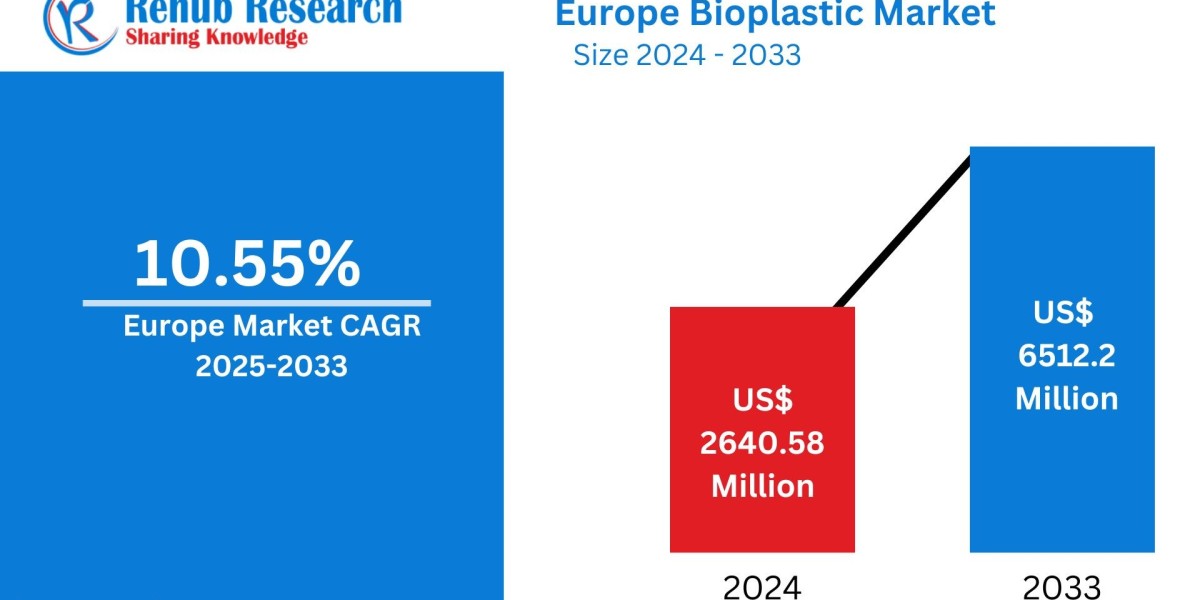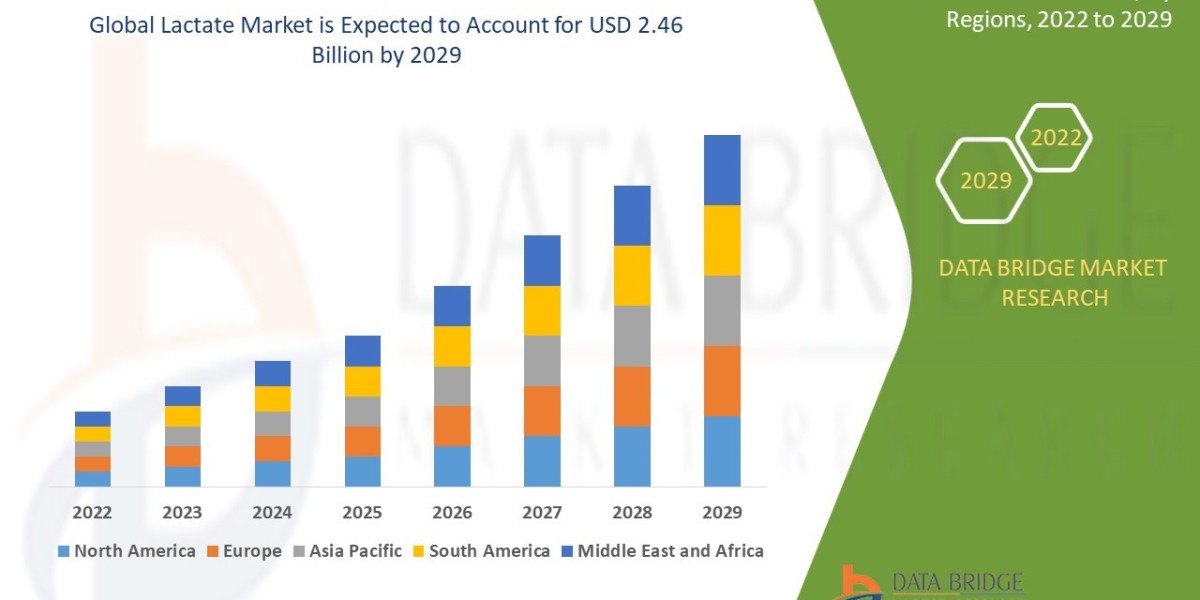According to the latest industry report by Renub Research, the Europe Bioplastic Market is projected to reach US$ 6,512.20 million by 2033, growing from US$ 2,640.58 million in 2024 at a CAGR of 10.55% during 2025–2033. The rapid acceleration of the bioplastics market across Europe is being driven by increasingly stringent regulations against single-use plastics, soaring consumer demand for sustainable alternatives, innovations in biopolymer technologies, and aggressive implementation of circular economy strategies.
? Bioplastics: The Future of Sustainable Materials
Bioplastics are derived from renewable sources such as corn starch, sugarcane, and vegetable fats and oils. Unlike traditional plastics made from petroleum, bioplastics offer significant environmental advantages including reduced carbon emissions, improved biodegradability, and lower energy consumption in production.
Governments across Europe have introduced ambitious legislation aiming to phase out fossil-based plastics in favor of bio-based and compostable alternatives. These regulations—alongside a shift in consumer behavior—are fueling the rise of bioplastics across packaging, automotive, agriculture, textiles, and construction industries.
? Market Segmentation Highlights
➤ By Material Type:
Biodegradable Bioplastics
Polylactic Acid (PLA): Widely used in packaging and 3D printing due to its compostability and compatibility with existing manufacturing equipment.
Polyhydroxyalkanoates (PHA): Ideal for medical and agricultural applications.
Starch Blends, PBAT, PBS: Preferred for single-use packaging and agricultural films.
Non-Biodegradable Bioplastics
Bio-based Polyethylene (PE)
Polyethylene Terephthalate (PET)
Polyamide (PA), Polypropylene (PP), PTT
These materials maintain the performance of conventional plastics while reducing dependence on fossil resources.
➤ By Application:
Packaging: Dominates the bioplastic market due to increasing demand for compostable food and beverage packaging.
Agriculture: Use in mulch films and seed coatings.
Consumer Goods: Bioplastic usage in electronics casings, toys, and personal care packaging is on the rise.
Textiles and Automotive: Lightweight and durable materials for upholstery and vehicle interiors.
Building & Construction: Use in piping, insulation, and structural components.
?? Country-Wise Growth Insights
Germany leads the European bioplastics market, supported by a strong industrial base and forward-thinking environmental policies.
France and Italy are also major players due to regulatory bans on single-use plastics and a strong push for compostable alternatives.
Nordic countries are at the forefront of innovation, focusing on advanced biopolymer development and sustainable design principles.
United Kingdom, post-Brexit, is continuing to align with EU sustainability standards, promoting bioplastics in its net-zero emissions strategy.
? Technological Innovations Driving the Market
Innovations in biopolymer research are significantly reducing the cost gap between bioplastics and petroleum-based plastics. Companies are now focusing on enhancing the mechanical properties, thermal resistance, and moisture stability of bioplastics, making them suitable for a broader range of applications.
Furthermore, enzyme-based degradation, chemical recycling of bioplastics, and composite bio-materials are areas of rapid development that promise to make bioplastics not just environmentally friendly but also economically viable.
? Key Players in the Europe Bioplastic Market
Some of the major companies operating in the European bioplastics industry include:
BASF SE
NatureWorks LLC
Total Corbion PLA
Novamont S.p.A
Biome Bioplastics
Futerro
Danimer Scientific
FKuR Kunststoff GmbH
Braskem
Plantic Technologies
These players are engaged in R&D activities, partnerships, acquisitions, and geographic expansions to strengthen their foothold in the European market.
? Circular Economy Initiatives and Government Support
The European Union’s Green Deal and Circular Economy Action Plan aim to make sustainable products the norm and push for full recyclability of plastic packaging by 2030. Additionally, EU Plastics Strategy and Single-Use Plastics Directive are compelling industries to explore and adopt bio-based materials.
These regulatory frameworks are encouraging manufacturers to transition towards environmentally sound product lines while also incentivizing innovation through grants, tax exemptions, and investment opportunities.
? Outlook for 2025–2033
The future of the Europe Bioplastic Market appears robust and resilient. As industries transition towards decarbonization and climate-neutral operations, bioplastics are expected to become mainstream. New market opportunities will emerge in areas such as biomedical devices, smart packaging, e-commerce logistics, and sustainable textiles.
Furthermore, consumer awareness around plastic pollution and carbon footprints will continue to drive the shift toward bioplastic alternatives. Retailers, especially in food and personal care sectors, will likely replace traditional plastics with biodegradable or compostable counterparts.
? Key Takeaways
Market Size: Projected to grow from US$ 2.64 Billion (2024) to US$ 6.51 Billion by 2033
CAGR: 10.55% from 2025 to 2033
Drivers: Government bans, consumer sustainability trends, circular economy policies, and innovation in biopolymer technology
Applications: Packaging, agriculture, automotive, textiles, construction, and consumer goods
❓ Frequently Asked Questions (FAQs)
1. What is the Europe Bioplastic Market size forecast?
The market is forecasted to reach US$ 6,512.20 million by 2033 from US$ 2,640.58 million in 2024, growing at a CAGR of 10.55%.
2. What are the main drivers of this market?
Stringent environmental regulations, growing consumer demand for eco-friendly materials, and innovations in bioplastics are key drivers.
3. Which country leads the bioplastics market in Europe?
Germany is the leading country in Europe for bioplastics, followed by France, Italy, and the Nordic nations.
4. What are the key applications of bioplastics?
Major applications include packaging, agriculture, textiles, automotive, construction, and consumer goods.
5. What types of bioplastics are included in the market?
The market includes both biodegradable (PLA, PBAT, PHA) and non-biodegradable (Bio-PE, Bio-PET, PTT) types.
6. How are governments promoting bioplastics in Europe?
Through regulations such as EU Plastics Strategy, Single-Use Plastics Directive, and funding under the Green Deal.
7. Which companies are major players in this market?
Key players include BASF SE, NatureWorks, Total Corbion PLA, Novamont, Biome Bioplastics, and Braskem.
8. What are the challenges faced by the bioplastics industry?
Challenges include higher costs, scalability issues, and lack of widespread composting infrastructure.
9. How are bioplastics better than conventional plastics?
Bioplastics are renewable, emit lower carbon, and can be biodegradable or compostable, making them more sustainable.
10. How can businesses benefit from investing in bioplastics?
They can improve their brand sustainability, meet regulatory compliance, reduce environmental impact, and appeal to eco-conscious consumers.
? ? About the Company – Renub Research
? Renub Research is a Market Research and Consulting Company with more than 15 years of experience, especially in international Business-to-Business Research, Surveys, and Consulting.
We provide a wide range of business research solutions that help companies make better business decisions. We partner with clients across all sectors and regions to identify their highest-value opportunities, address their most critical challenges, and transform their businesses.
Our wide clientele includes key players in Healthcare, Travel & Tourism, Food & Beverages, Power & Energy, Information Technology, Telecom & Internet, Chemicals, Logistics & Automotive, Consumer Goods & Retail, Building & Construction, and Agriculture.
Our core team comprises experienced professionals with graduate, postgraduate, and Ph.D. qualifications in Finance, Marketing, Human Resources, Biotechnology, Medicine, Information Technology, Environmental Science, and more.
? Media Contact:
Company Name: Renub Research
Contact Person: Rajat Gupta, Marketing Manager
Phone No: +91-120-421-9822 (IND) | +1-478-202-3244 (USA)
Email: rajat@renub.com
? Explore the full report here: Europe Bioplastic Market













